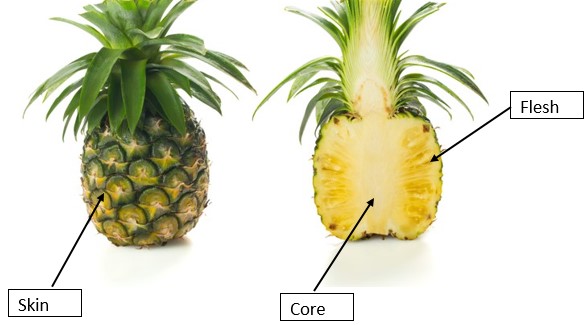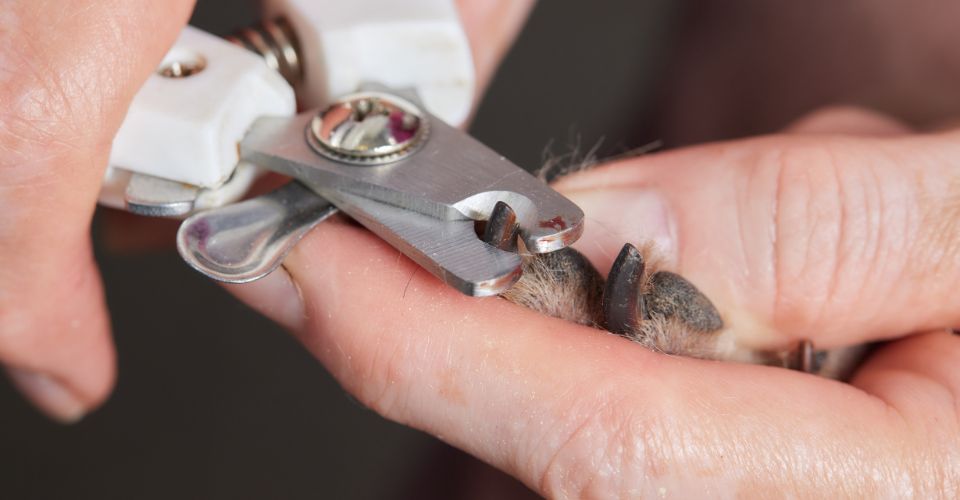Summers are here, and so are pineapples.
If you love to hit your sweet tooth with the combo of sugary and tangy chunks of pineapple, your dog might want that too.
Why?
For three reasons. First, they like to eat anything they can get their paws on. Second, they are attracted to the bright color of pineapples. And third, because you are eating it, so it’s their duty to make sure you are eating healthy (they think of themselves as health inspectors).
Being a dog parent, you know that dogs have a sensitive stomach. Anything that goes in affects their health right away. So this summer, you need to know, can dogs eat pineapple?
1. Can Dogs Eat Pineapple?
Yes—and no.
The benefits of pineapples for dogs abound; they are loaded with healthy nutrients that bolster a dog’s overall health. However, some pineapple contents can impact a dog’s health adversely, making them sick.
There are healthy and unhealthy pineapples, depending on the amount consumed.
Let’s get into further details.
2. Nutrients in Pineapple
The nutrient content in a pineapple depends on whether it’s fresh (raw) or canned. As raw pineapples have a piquant taste, most people buy canned pineapples because being dipped in a sugary fruit syrup reduces their natural tanginess.
This sweetness comes at the cost of extra calories and sugar content.
Let’s see how much the basic nutrients in one cup of raw pineapple chunks differ from one cup of tin-pack pineapples.
Raw Pineapple
| Calories | 82 kCal |
| Carbohydrates | 21.7g |
| Fiber | 2.3g |
| Sugar | 16.3g |
| Calcium | 21mg |
| Vitamin C | 78.9mg |
| Vitamin B3 | 0.8mg |
| Folate | 30mg |
Canned Pineapple
| Calories | 109 kCal |
| Carbohydrates | 28.2 g |
| Fiber | 2.4g |
| Sugar | 25.8g |
| Calcium | 29mg |
| Vitamin C | 17mg |
| Vitamin B3 | 0.5mg |
| Folate | 9mg |
Additional to these nutrients, fresh pineapples have slightly more magnesium, potassium, thiamin, riboflavin, and vitamin B-6 than canned chunks. Iron and zinc levels are identical in both.
3. Canned Pineapple or Raw Pineapple
Obviously, raw pineapples are best!
Why?
The canned form of this fruit contains a lot of sugar, fiber, and fat content, making it a hard-to-digest food for dogs.
Moreover, fresh fruits contain more vitamins and minerals as compared to the processed ones. It is therefore not advised to feed sensitive stomachs with chemically laced foods.
4. Benefits of Pineapple
Pineapples are as healthy as they are delicious.
Here are some of the benefits of dog eating pineapple
a) Enhances Digestion
Pineapples contain a good amount of fiber that helps them with digestion and prevents constipation.
They also carry Bromelain, a digestive enzyme that breaks down the amino acids in the food quickly, improving the absorption of food ingredients in the dog’s stomach.
b) Combats Diseases
Other than digestion, “bromelain accounts for many therapeutic benefits like the treatment of angina pectoris, bronchitis, sinusitis, surgical trauma, and thrombophlebitis, debridement of wounds, and enhanced absorption of drugs, particularly antibiotics. It also relieves osteoarthritis, diarrhea, and various cardiovascular disorders. Bromelain also possesses some anticancerous activities and promotes apoptotic cell death.”
c) Reduces Inflammation
As dogs are playful animals, they are always prone to injuries, abrasions, fractures, etc., which can lead to inflammation in the affected areas. Bromelain also has anti-inflammatory properties, which can reduce swelling as well as soothe pain.
d) Reduces the Risk of Bladder and Kidney Stones
If your dog’s snack contains more oxalate, it can be a causal factor of kidney and bladder stones.
Since pineapples have low-oxalate concentrations, replacing them with an unhealthy treat can help prevent stone formation and relieve pain caused by stones.
e) Helps With Coprophagia Condition
In Coprophagia, a dog compulsively eats feces of its own, other dogs, cats, etc. It happens due to underfeeding, dyspepsia, malabsorption of nutrients, etc.
As mentioned earlier, pineapples increase nutrient absorption and give the dogs a feeling of fullness, which prevents them from eating stool.
5. Which Parts of Pineapple Can a Dog Eat?
The crown, leaves, and skin carry an exceptionally high Bromelain content than the flesh where it is moderate. Feed your dog only the flesh of the pineapple.
Eating other parts of pineapple is not dangerous per se, but it may jeopardize the dog’s health if consumed in a large amount.

6. How to Feed a Dog Pineapple?
There are various fun ways you can feed your dog with pineapple. Here are some suggestions:
- Give your small dog cubes of raw pineapple
- Freeze the fruit and make its popsicles
- Make its juice
Or you can make different combinations with other summer fruits to let your dog enjoy the season to its full.
Don’t feed your dog dried pineapple because they have a large amount of sugar that can be harmful to dogs.
7. Which Nutrient in Pineapples is Dangerous for Dogs?
Pineapples don’t have any nutrients that are toxic for dogs. However, unripe pineapples can be poisonous. They have a bad taste and cause irritation in dog’s throat. They also contain compounds that a dog’s stomach is unable to digest, leading to stomach upsets in dogs.
8. How Much Pineapple is Good for Dogs?
First of all, consider it as a snack, not a meal. It can be a healthy alternative for artificially prepared dog treats. On average, 1 to 2 slices of pineapple will be enough. But we recommend consulting a vet to know the exact amount as the food intake depends on the breed, size, age, health conditions, and physical activity.
Pineapples have a fairly good amount of calories, so if a lazy dog overeats it, it can lead to obesity as well as other medical conditions.
9. What Are the Side Effects of a Dog Eating Too Much Pineapple?
“Excess of everything is bad.” The same applies to dogs eating pineapples. Here is a snapshot of the issues a dog may face if he consumes too much of it.
a) Constipation
Pineapples are good for dog health if consumed in a small quantity; if overdosed, they can lead to constipation.
b) Diarrhea
Dogs with sensitive stomachs such as toy dogs and teacup dogs can get diarrhea from eating pineapples because of nutrient overdose.
c) Vomiting
For dogs allergic to pineapples, consuming a chunk may cause stomach upsets leading to vomiting. Vomiting can also be caused by Vitamin C present in pineapples if consumed in large portions.
d) Tooth decay
Traces of acid and the presence of Bromelain in pineapples can cause tooth decay and hurt lips, tongue, or cheeks as well. The acid affects the enamel, and the digestive enzymes break the amino acids in saliva, causing a tingling sensation in the mouth.
Coming back to the question, can dogs eat pineapple? The answer is yes, but in moderation. Pineapples are healthy for dogs, but owners should be vigilant about how much pineapple your dog is munching.





